

具体描述
编辑推荐
《组合数学(英文版)(第5版)》是系统阐述组合数学基础,理论、方法和实例的优秀教材。出版30多年来多次改版。被MIT、哥伦比亚大学、UIUC、威斯康星大学等众多国外高校采用,对国内外组合数学教学产生了较大影响。也是相关学科的主要参考文献之一。《组合数学(英文版)(第5版)》侧重于组合数学的概念和思想。包括鸽巢原理、计数技术、排列组合、Polya计数法、二项式系数、容斥原理、生成函数和递推关系以及组合结构(匹配,实验设计、图)等。深入浅出地表达了作者对该领域全面和深刻的理解。除包含第4版中的内
内容简介
《组合数学(英文版)(第5版)》英文影印版由Pearson Education Asia Ltd,授权机械工业出版社少数出版。未经出版者书面许可,不得以任何方式复制或抄袭奉巾内容。仅限于中华人民共和国境内(不包括中国香港、澳门特别行政区和中同台湾地区)销售发行。《组合数学(英文版)(第5版)》封面贴有Pearson Education(培生教育出版集团)激光防伪标签,无标签者不得销售。English reprint edition copyright@2009 by Pearson Education Asia Limited and China Machine Press.Original English language title:Introductory Combinatorics,Fifth Edition(ISBN978—0—1 3-602040-0)by Richard A.Brualdi,Copyright@2010,2004,1999,1992,1977 by Pearson Education,lnc. All rights reserved.
Published by arrangement with the original publisher,Pearson Education,Inc.publishing as Prentice Hall.
For sale and distribution in the People’S Republic of China exclusively(except Taiwan,Hung Kong SAR and Macau SAR).
作者简介
Richard A.Brualdi,美国威斯康星大学麦迪逊分校数学系教授(现已退休)。曾任该系主任多年。他的研究方向包括组合数学、图论、线性代数和矩阵理论、编码理论等。Brualdi教授的学术活动非常丰富。担任过多种学术期刊的主编。2000年由于“在组合数学研究中所做出的杰出终身成就”而获得组合数学及其应用学会颁发的欧拉奖章。内页插图
目录
1 What Is Combinatorics?1.1 Example:Perfect Covers of Chessboards
1.2 Example:Magic Squares
1.3 Example:The Fou r-CoIor Problem
1.4 Example:The Problem of the 36 C)fficers
1.5 Example:Shortest-Route Problem
1.6 Example:Mutually Overlapping Circles
1.7 Example:The Game of Nim
1.8 Exercises
2 Permutations and Combinations
2.1 Four Basic Counting Principles
2.2 Permutations of Sets
2.3 Combinations(Subsets)of Sets
2.4 Permutations ofMUltisets
2.5 Cornblnations of Multisets
2.6 Finite Probability
2.7 Exercises
3 The Pigeonhole Principle
3.1 Pigeonhole Principle:Simple Form
3.2 Pigeon hole Principle:Strong Form
3.3 A Theorem of Ramsey
3.4 Exercises
4 Generating Permutations and Cornbinations
4.1 Generating Permutations
4.2 Inversions in Permutations
4.3 Generating Combinations
4.4 Generating r-Subsets
4.5 PortiaI Orders and Equivalence Relations
4.6 Exercises
5 The Binomiaf Coefficients
5.1 Pascals Triangle
5.2 The BinomiaI Theorem
5.3 Ueimodality of BinomiaI Coefficients
5.4 The Multinomial Theorem
5.5 Newtons Binomial Theorem
5.6 More on Pa rtially Ordered Sets
5.7 Exercises
6 The Inclusion-Exclusion P rinciple and Applications
6.1 The In Clusion-ExclusiOn Principle
6.2 Combinations with Repetition
6.3 Derangements+
6.4 Permutations with Forbidden Positions
6.5 Another Forbidden Position Problem
6.6 M6bius lnverslon
6.7 Exe rcises
7 Recurrence Relations and Generating Functions
7.1 Some Number Sequences
7.2 Gene rating Functions
7.3 Exponential Generating Functions
7.4 Solving Linear Homogeneous Recurrence Relations
7.5 Nonhomogeneous Recurrence Relations
7.6 A Geometry Example
7.7 Exercises
8 Special Counting Sequences
8.1 Catalan Numbers
8.2 Difference Sequences and Sti rling Numbers
8.3 Partition Numbers
8.4 A Geometric Problem
8.5 Lattice Paths and Sch rSder Numbers
8.6 Exercises Systems of Distinct ReDresentatives
9.1 GeneraI Problem Formulation
9.2 Existence of SDRs
9.3 Stable Marriages
9.4 Exercises
10 CombinatoriaI Designs
10.1 Modular Arithmetic
10.2 Block Designs
10.3 SteinerTriple Systems
10.4 Latin Squares
10.5 Exercises
11 fntroduction to Graph Theory
11.1 Basic Properties
11.2 Eulerian Trails
11.3 Hamilton Paths and Cycles
11.4 Bipartite Multigraphs
11.5 Trees
11.6 The Shannon Switching Game
11.7 More on Trees
11.8 Exercises
12 More on Graph Theory
12.1 Chromatic Number
12.2 Plane and Planar Graphs
12.3 A Five-Color Theorem
12.4 Independence Number and Clique Number
12.5 Matching Number
12.6 Connectivity
12.7 Exercises
13 Digraphs and Networks
13.1 Digraphs
13.2 Networks
13.3 Matchings in Bipartite Graphs Revisited
13.4 Exercises
14 Polya Counting
14.1 Permutation and Symmetry Groups
14.2 Bu rnsides Theorem
14.3 Polas Counting Formula
14.4 Exercises
Answers and Hints to Exercises
精彩书摘
Chapter 3The Pigeonhole Principle
We consider in this chapter an important, but elementary, combinatorial principle that can be used to solve a variety of interesting problems, often with surprising conclusions. This principle is known under a variety of names, the most common of which are the pigeonhole principle, the Dirichlet drawer principle, and the shoebox principle.1 Formulated as a principle about pigeonholes, it says roughly that if a lot of pigeons fly into not too many pigeonholes, then at least one pigeonhole will be occupied by two or more pigeons. A more precise statement is given below.
3.1 Pigeonhole Principle: Simple FormThe simplest form of the pigeonhole principle is tile following fairly obvious assertion.Theorem 3.1.1 If n+1 objects are distributed into n boxes, then at least one box contains two or more of the objects.
Proof. The proof is by contradiction. If each of the n boxes contains at most one of the objects, then the total number of objects is at most 1 + 1 + ... +1(n ls) = n.Since we distribute n + 1 objects, some box contains at least two of the objects.
Notice that neither the pigeonhole principle nor its proof gives any help in finding a box that contains two or more of the objects. They simply assert that if we examine each of the boxes, we will come upon a box that contains more than one object. The pigeonhole principle merely guarantees the existence of such a box. Thus, whenever the pigeonhole principle is applied to prove the existence of an arrangement or some phenomenon, it will give no indication of how to construct the arrangement or find an instance of the phenomenon other than to examine all possibilities.
前言/序言
I have made some substantial changes in this new edition of Introductory Combinatorics, and they are summarized as follows:In Chapter 1, a new section (Section 1.6) on mutually overlapping circles has been added to illustrate some of the counting techniques in later chapters. Previously the content of this section occured in Chapter 7.
The old section on cutting a cube in Chapter 1 has been deleted, but the content appears as an exercise.
Chapter 2 in the previous edition (The Pigeonhole Principle) has become Chapter 3. Chapter 3 in the previous edition, on permutations and combinations, is now Chapter 2. Pascals formula, which in the previous edition first appeared in Chapter 5, is now in Chapter 2. In addition, we have de-emphasized the use of the term combination as it applies to a set, using the essentially equivalent term of subset for clarity. However, in the case of multisets, we continue to use combination instead of, to our mind, the more cumbersome term submultiset.
Chapter 2 now contains a short section (Section 3.6) on finite probability.
Chapter 3 now contains a proof of Ramseys theorem in the case of pairs.
Some of the biggest changes occur in Chapter 7, in which generating functions and exponential generating functions have been moved to earlier in the chapter (Sections 7.2 and 7.3) and have become more central.
The section on partition numbers (Section 8.3) has been expanded.
Chapter 9 in the previous edition, on matchings in bipartite graphs, has undergone a major change. It is now an interlude chapter (Chapter 9) on systems of distinct representatives (SDRs)——the marriage and stable marriage problemsand the discussion on bipartite graphs has been removed.
As a result of the change in Chapter 9, in the introductory chapter on graph theory (Chapter 11), there is no longer the assumption that bipartite graphs have been discussed previously.
用户评价
我一直觉得组合数学是一门“艺术”,而这本书则像是一位伟大的艺术家,用精妙的笔触勾勒出这个学科的迷人之处。它在数学的严谨性之外,还融入了许多数学家们探索问题的智慧和创造力。我尤其喜欢书中穿插的那些历史故事和数学家的轶事,这让我在枯燥的公式推导中感受到人性的温暖和科学的魅力。比如,书中提到的一些关于“猜想”和“证明”的精彩过程,让我对数学研究的本质有了更深的理解。同时,这本书在对概念的引入上,也非常注重培养读者的直觉。它鼓励读者去思考“为什么”,而不是仅仅记住“是什么”。这一点对于我这种更喜欢理解而非死记硬背的学习者来说,非常重要。阅读这本书,就像是在进行一场智力探险,每一次翻页都可能遇到新的惊喜和挑战,让人欲罢不能。
评分这本书的深度和广度都让我印象深刻。它不仅仅是一本入门读物,更像是一部百科全书式的参考书。从最基本的鸽巢原理到更加精深的埃尔米特矩阵和组合设计,几乎涵盖了组合数学的绝大多数重要分支。我特别喜欢它在处理一些经典问题时,会提供多种不同的解决方案,并对它们进行比较分析,这有助于我更全面地理解问题的本质。例如,在讲解Polya计数定理时,书中不仅给出了定理的严格证明,还提供了几个非常详细的实例,一步一步地展示了如何运用定理来解决实际问题。这对于我这种喜欢刨根问底的读者来说,简直是太棒了。而且,这本书的排版也相当出色,公式清晰,图表精美,阅读体验非常流畅。每次遇到组合数学上的困惑,翻开这本书,总能找到想要的答案,并且还会学到一些意想不到的知识。
评分作为一名对计算机科学研究方向比较感兴趣的学生,我一直在寻找一本能够帮助我理解算法设计中组合学思想的书籍。这本书在这方面做得非常出色。它不仅仅是理论的堆砌,而是非常注重将组合数学的工具和方法与实际的算法设计相结合。例如,在图论部分,书中详细讲解了各种图的性质以及与之相关的算法,比如最短路径算法、最小生成树算法等等,并且这些算法的推导都与组合学原理紧密相连。我特别喜欢关于网络流的章节,它用非常清晰的方式解释了Max-Flow Min-Cut定理,并展示了其在很多实际问题中的应用,比如匹配问题。这本书让我明白,很多看似复杂的算法问题,其实背后都隐藏着深刻的组合学思想,掌握了这些思想,就能更好地设计和分析算法。
评分说实话,我当初买这本书纯粹是因为课程需要,并没有抱太大期望,但它却给了我一个大大的惊喜。我之前对组合数学的概念一直有些模糊,觉得它抽象又难以捉摸,但这本书的讲解方式让我彻底改观。作者非常擅长将复杂的概念转化为易于理解的语言,并且通过大量的图示和直观的比喻来辅助说明。比如,在讲解排列组合时,书中用了很多现实生活中的例子,比如分发糖果、安排座位等等,这些都大大降低了学习的门槛。我尤其欣赏的是,这本书并没有停留在理论层面,而是花了很多篇幅介绍这些组合学方法在实际问题中的应用。像是如何用生成函数来解决一些递推关系,或者如何在图论中找到最优路径等等,这些都让我看到了组合数学的强大生命力。阅读这本书的过程,就像是在和一位经验丰富的老师在进行一次深入的交流,你提出的每一个疑问,似乎都能在书中找到满意的解答。
评分这本书绝对是组合数学领域的基石!从我第一次翻开它,就有一种被严谨的数学思想深深吸引的感觉。作者在讲解概念时,循序渐进,从最基础的计数原理开始,逐步深入到更复杂的主题,比如生成函数、图论、以及一些高级的组合计数技巧。每一步都有清晰的推导和详实的例子,这对于我这样需要扎实理解理论的读者来说,简直是福音。特别是关于容斥原理的部分,书中给出了好几种不同的角度去理解和应用,让我茅塞顿开,解决了之前一直困扰我的几个难题。而且,书中的习题设计也非常巧妙,既有巩固基础的,也有挑战思维的,做完习题后,感觉对整个章节的掌握程度又上了一个台阶。对于想要深入研究组合数学,或者需要将其应用于其他领域(比如计算机科学、概率论等)的读者来说,这本书绝对是不可多得的宝藏。我尤其喜欢书中的一些历史背景介绍,这让我在学习数学的同时,也能感受到数学发展的脉络和智慧的传承,非常有启发性。
评分再遇类似事件,大家请站出来
评分非常满意,五星
评分好得很!好得很!好得很!好得很!好得很!好得很!好得很!好得很!好得很!好得很!好得很!好得很!
评分值得学习
评分非常经典的书籍,先买来留着以后看
评分不是说书是16开的吗,怎么给我的货是32开的,简直就是在欺骗我,并且要比标明为32开的要贵5块钱,还没有打折,我买了8本啊!恰好在搞活动的前一天发货过来,第二天满300减100,开始说没货,为什么前一天有货了?
评分若这是刚需,不妨设置便捷垃圾袋
评分帮朋友买的,据说很不错
评分昨天该网友把照片和事情经过@了杭州地铁官方,随后杭州地铁官方也转发回应:
相关图书
本站所有内容均为互联网搜索引擎提供的公开搜索信息,本站不存储任何数据与内容,任何内容与数据均与本站无关,如有需要请联系相关搜索引擎包括但不限于百度,google,bing,sogou 等
© 2025 book.coffeedeals.club All Rights Reserved. 静流书站 版权所有


![地理信息系统导论(原著第5版) [Introduction?to?Geographic?Information?Systems] pdf epub mobi 电子书 下载](https://pic.windowsfront.com/10003442/687b3551-4c07-435e-b9c1-a46dde7055d0.jpg)


![ε空间 I:实分析(第三年的数学博客选文)(英文版) [An Epsilon of Room,I:Real Analysis(Pages from year three of a Mathematical Blog)] pdf epub mobi 电子书 下载](https://pic.windowsfront.com/12118828/58b391f9N68bdcf84.jpg)



![极小曲面教程(英文版) [A Course in Minimal Surfaces] pdf epub mobi 电子书 下载](https://pic.windowsfront.com/12038119/58b7eec4N7b8317f1.jpg)

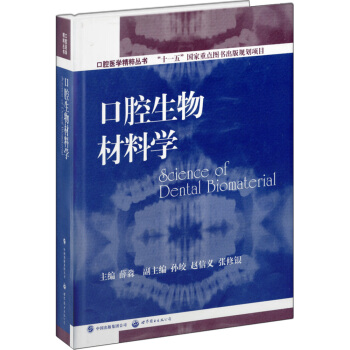
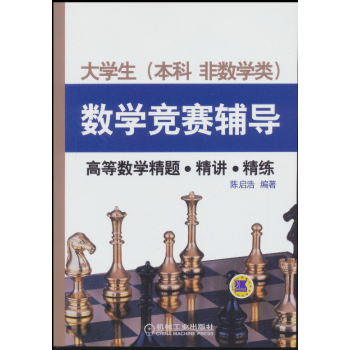
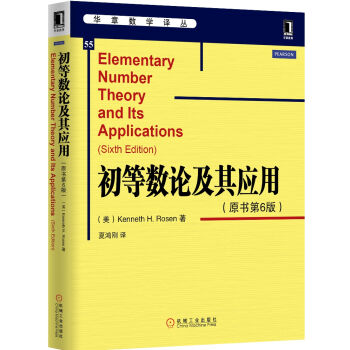
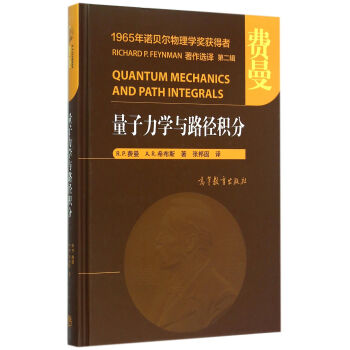

![通向实在之路:宇宙法则的完全指南 [The Road to Reality] pdf epub mobi 电子书 下载](https://pic.windowsfront.com/11386679/rBEhWVLge8YIAAAAAAgLqrzRWo4AAIITwBI_DUACAvC785.jpg)

![分子模拟入门(第2版) [Understanding Molecular Simulation] pdf epub mobi 电子书 下载](https://pic.windowsfront.com/10516009/405eae7a-5bc8-4e61-82f6-9693ffbffb96.jpg)
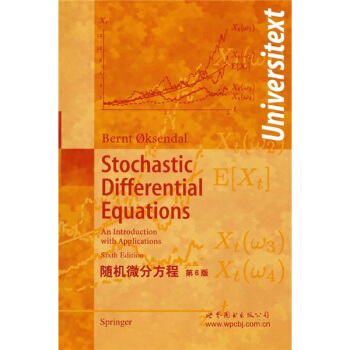
![伯克利物理学教程(SI版)第2卷:电磁学(英文影印版·原书第2版) [ Berkeley Physics Course(In SI Units)Electricity and Magnetism] pdf epub mobi 电子书 下载](https://pic.windowsfront.com/11475481/539e8a8eNa7f1199e.jpg)